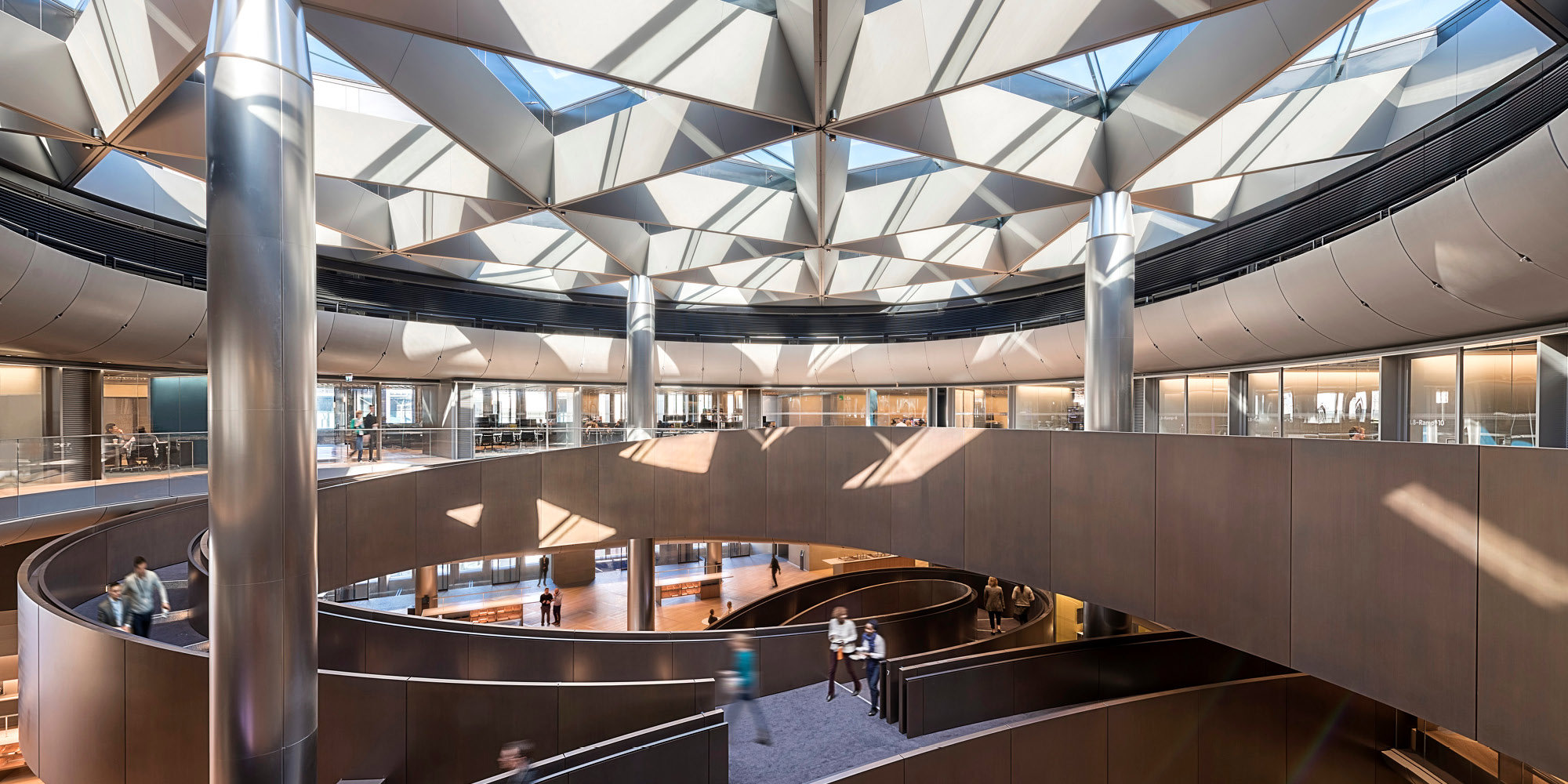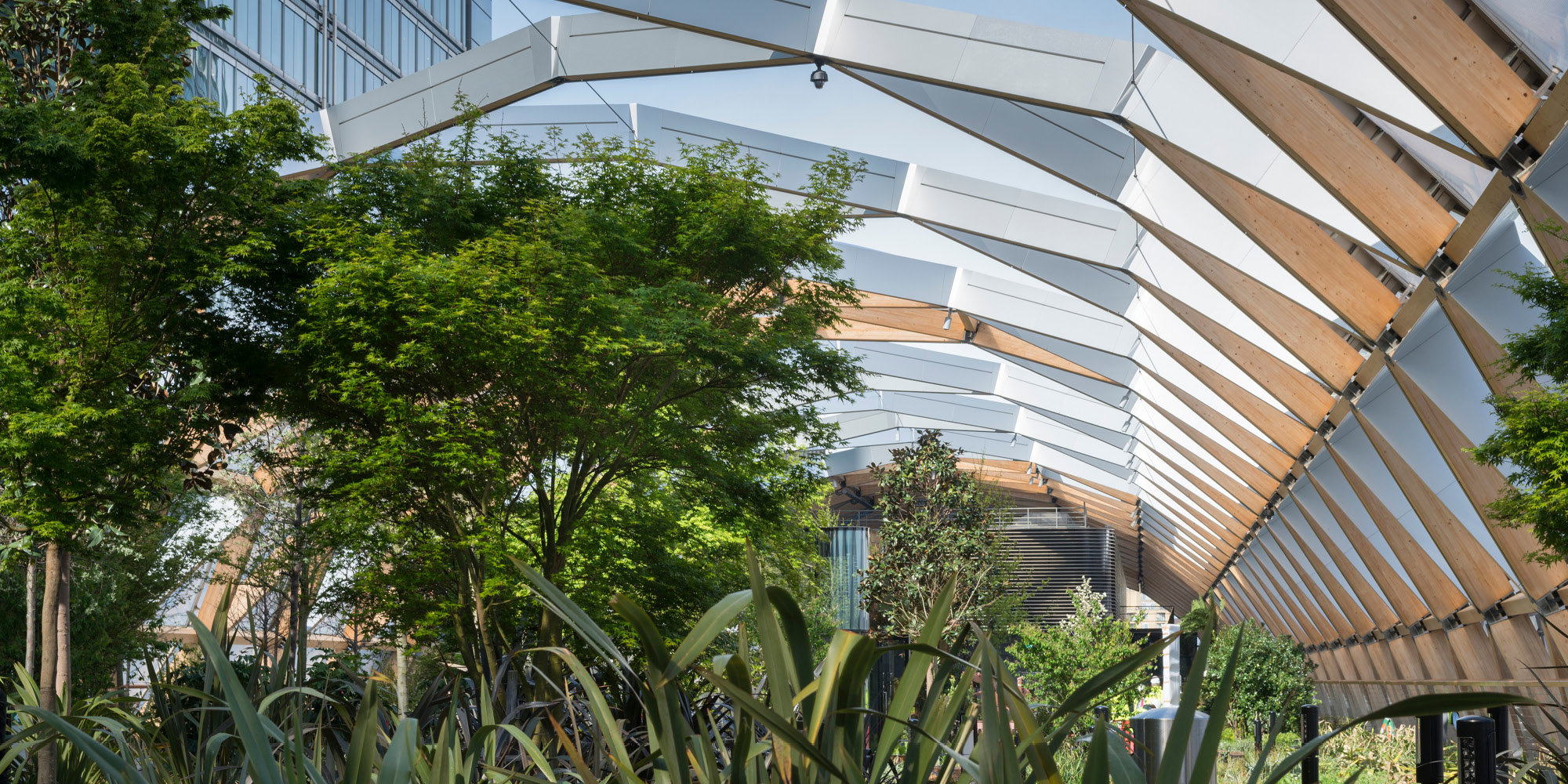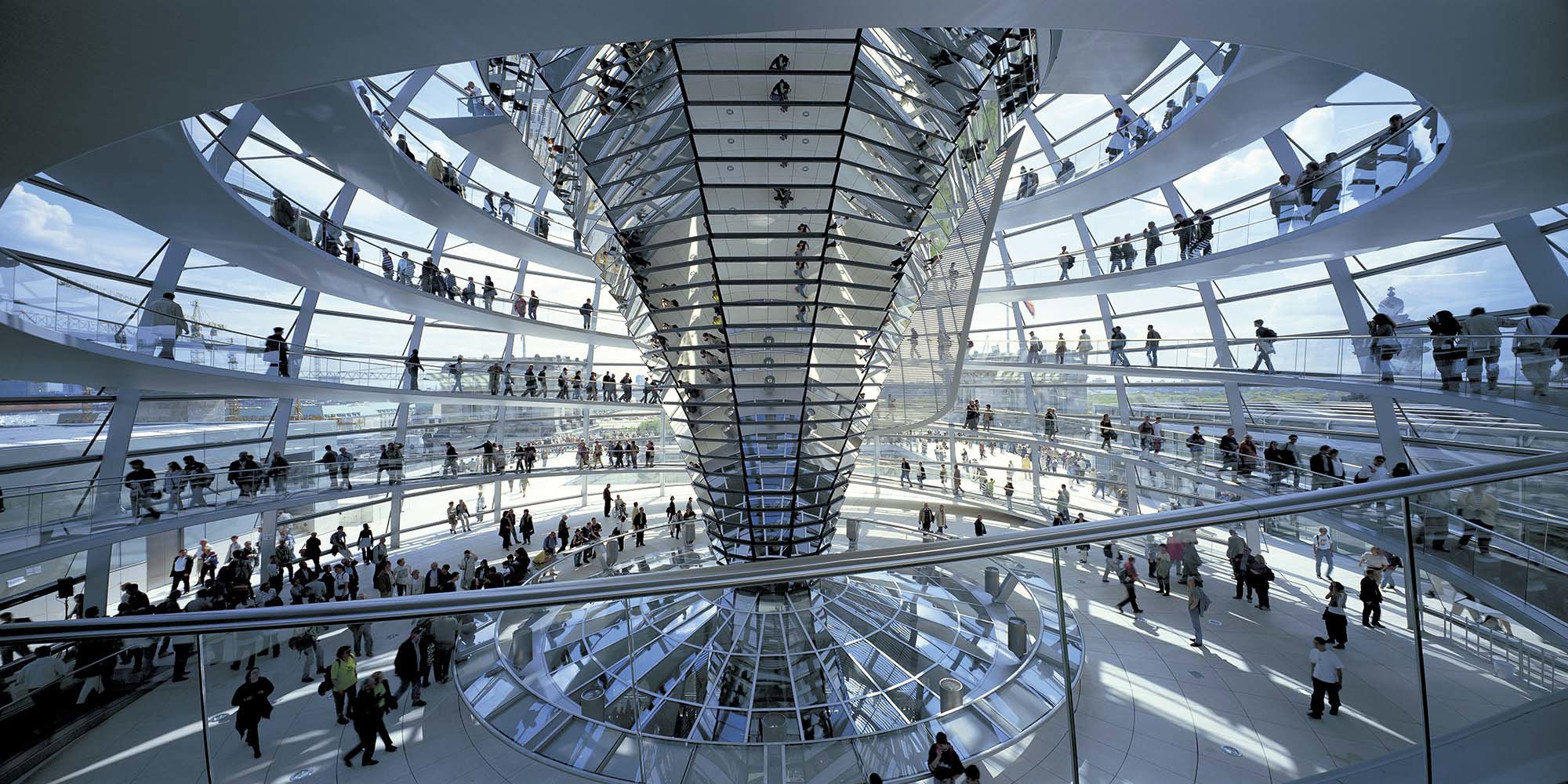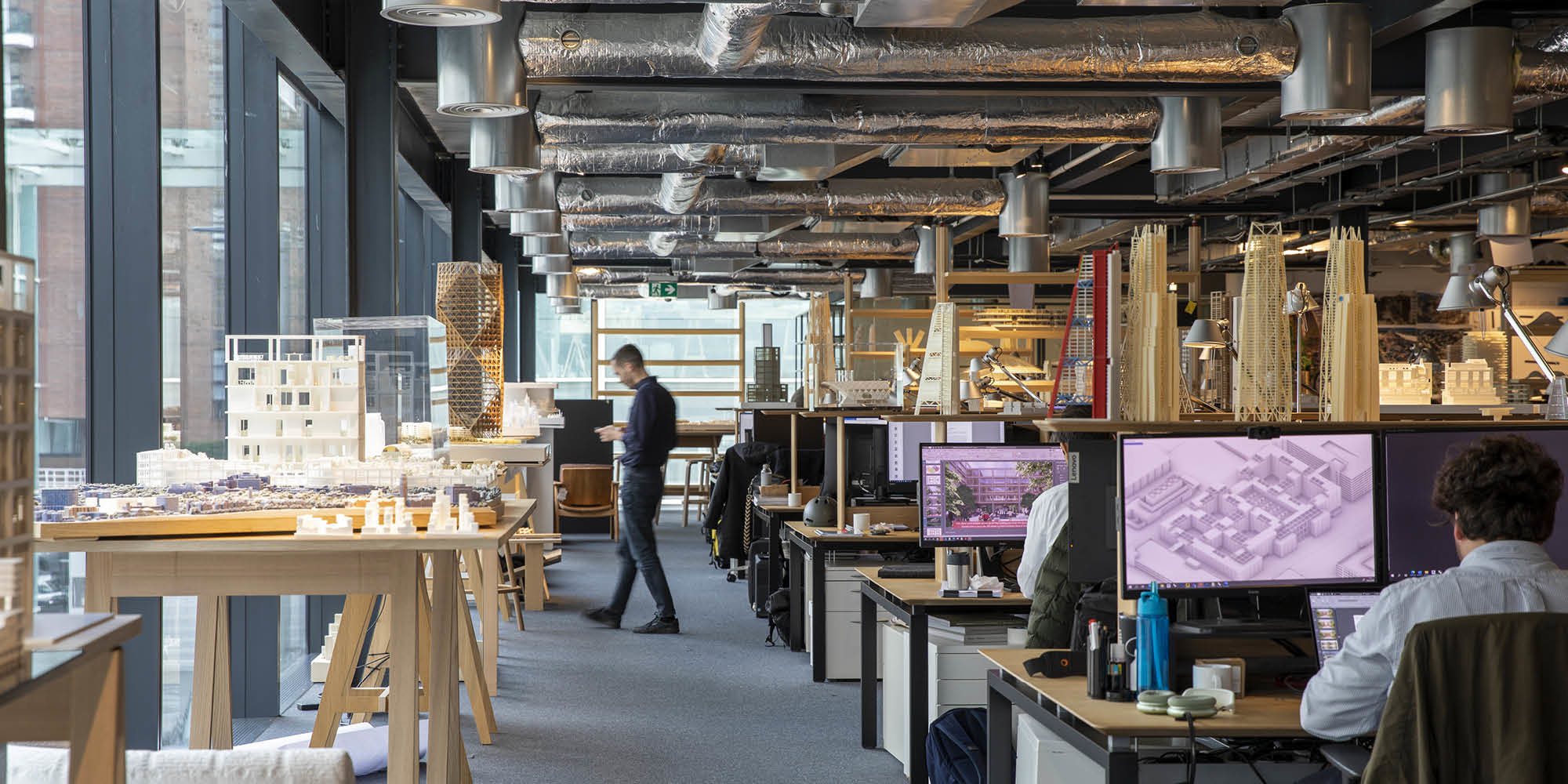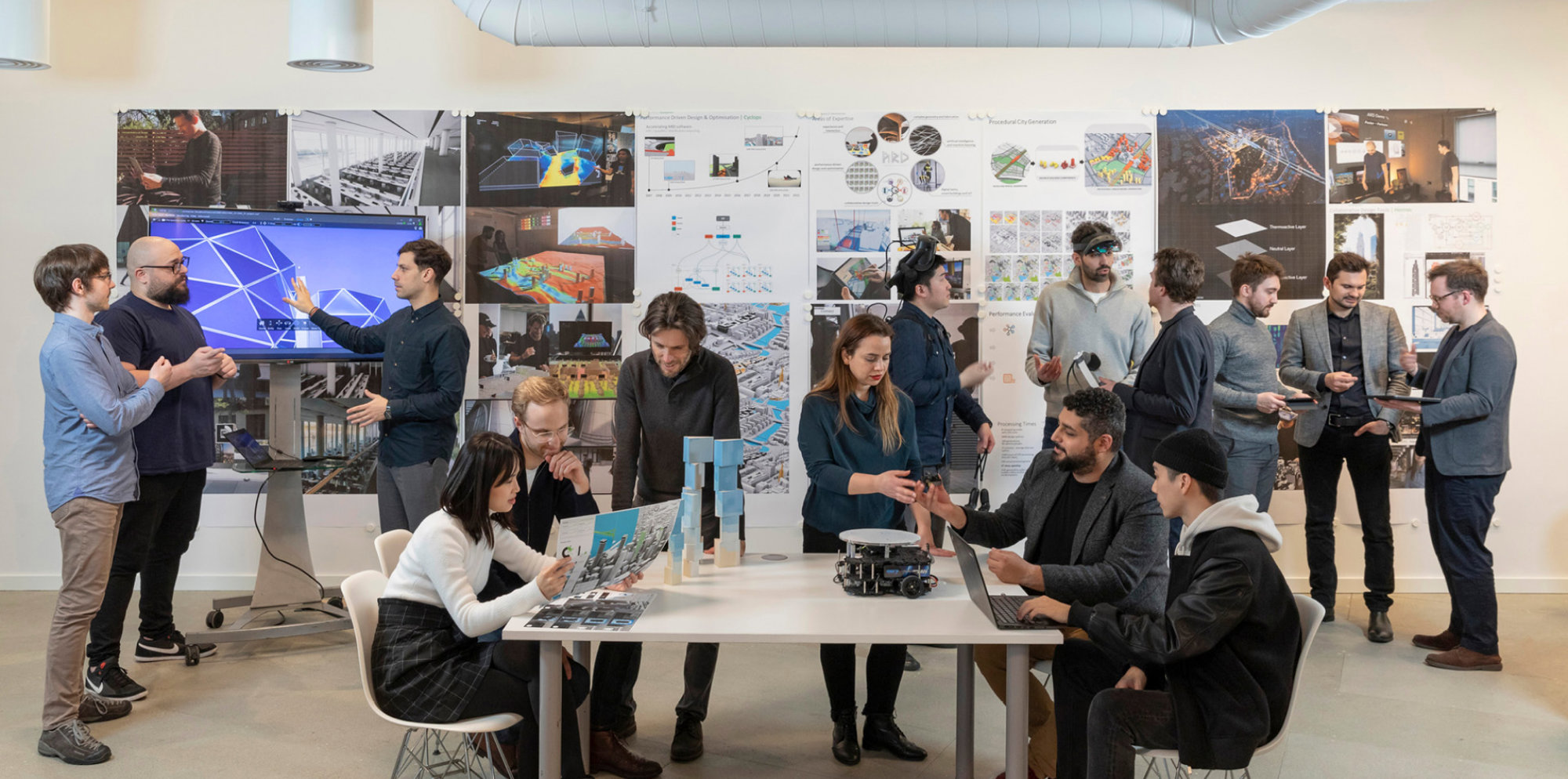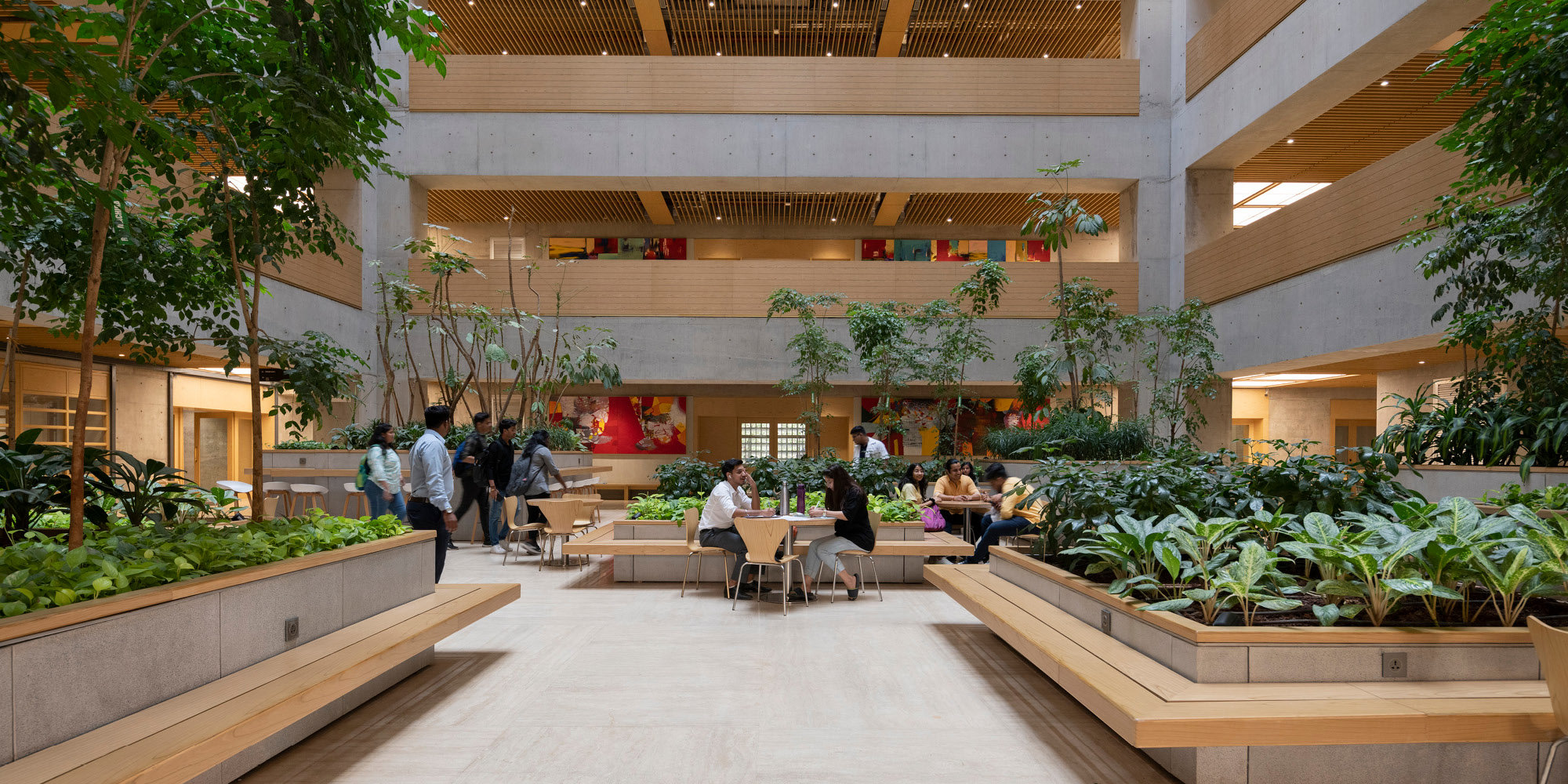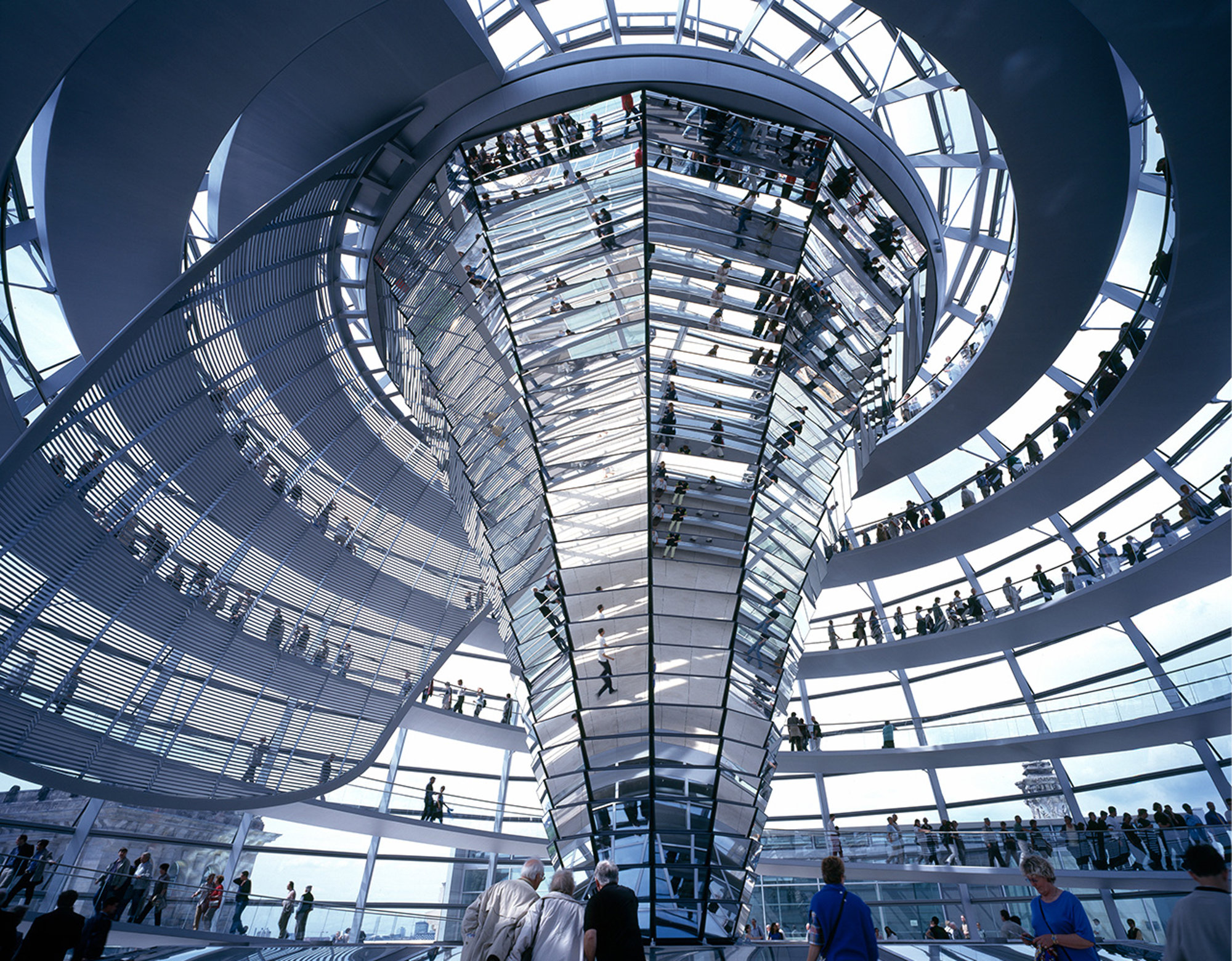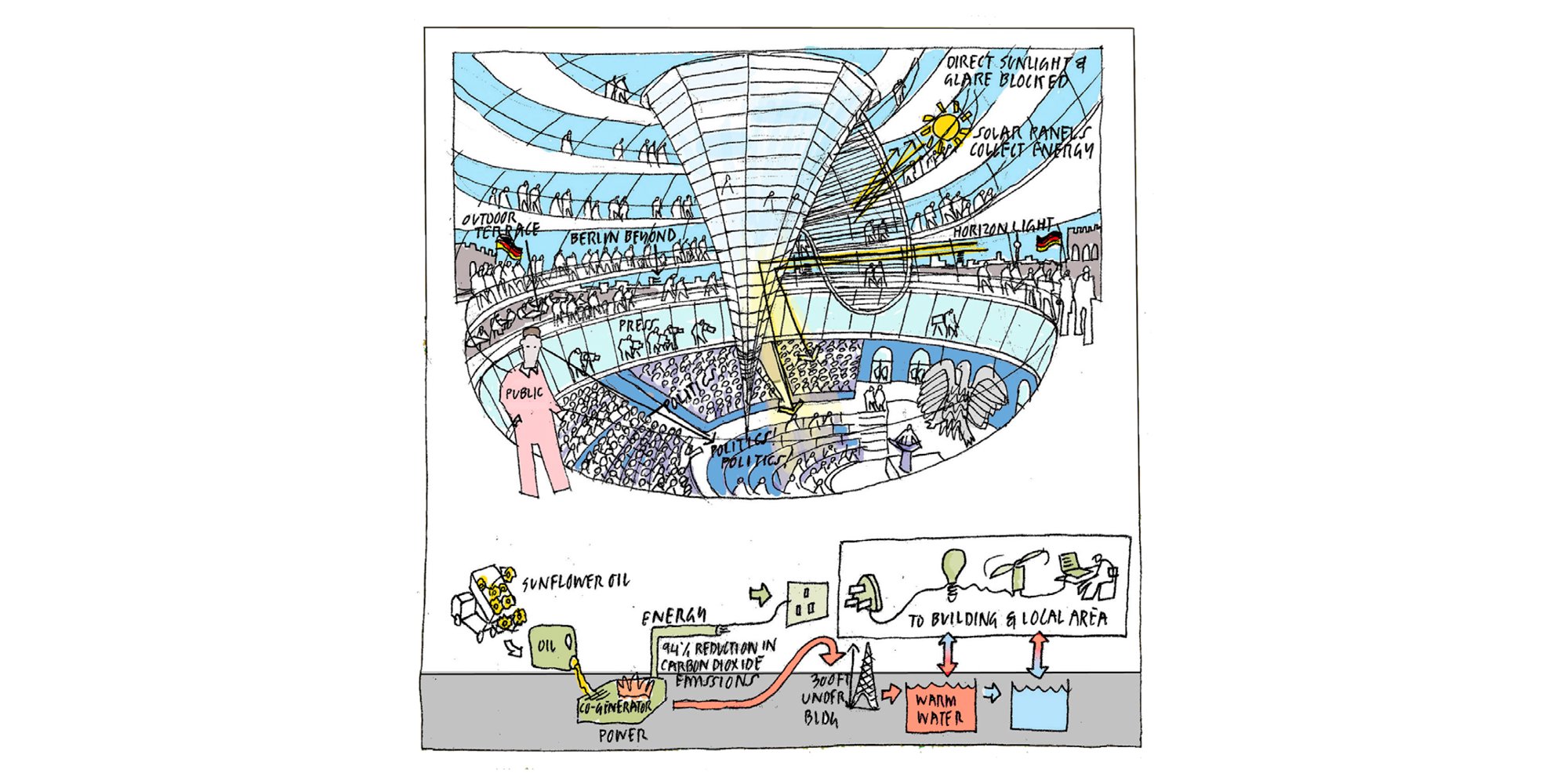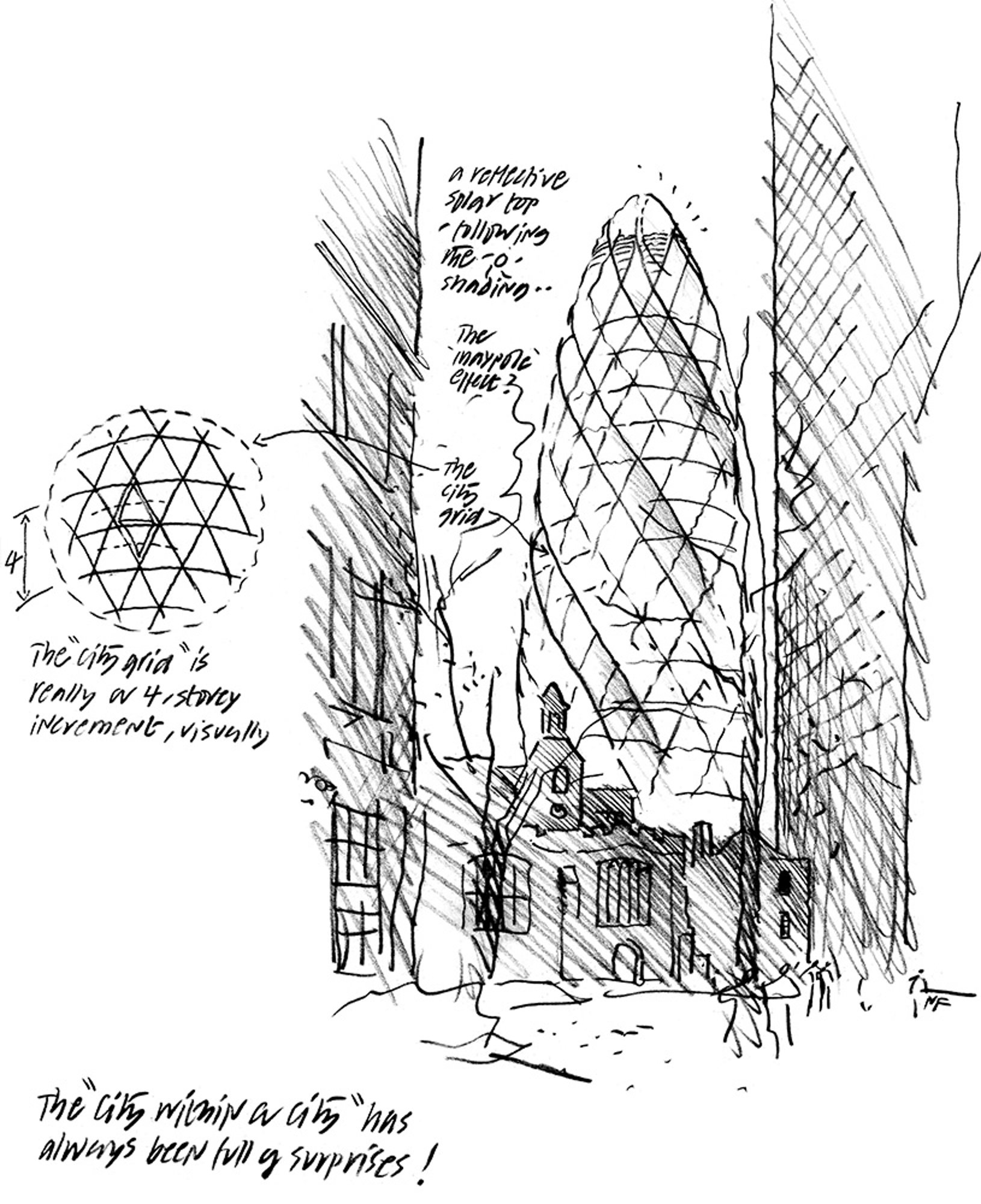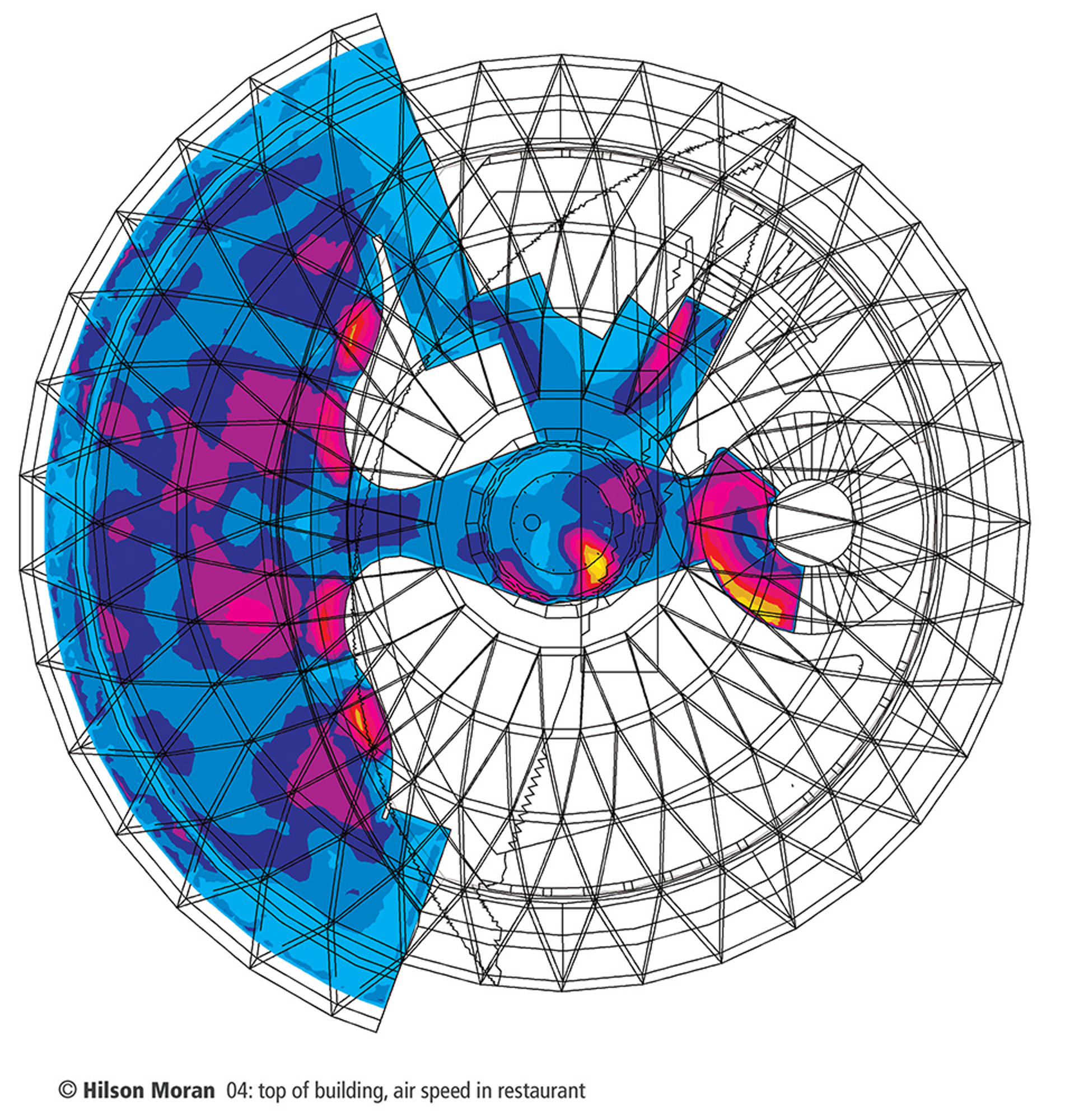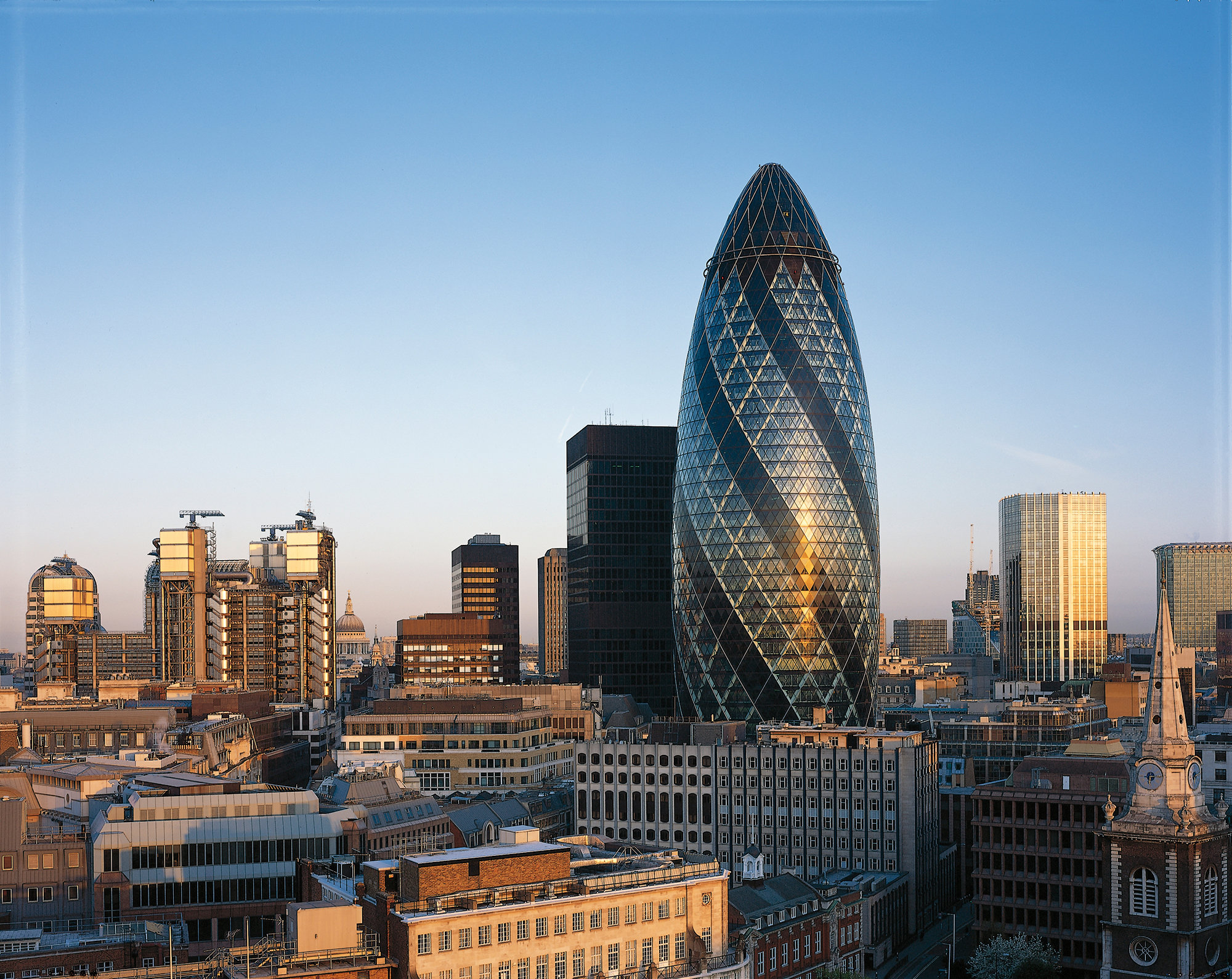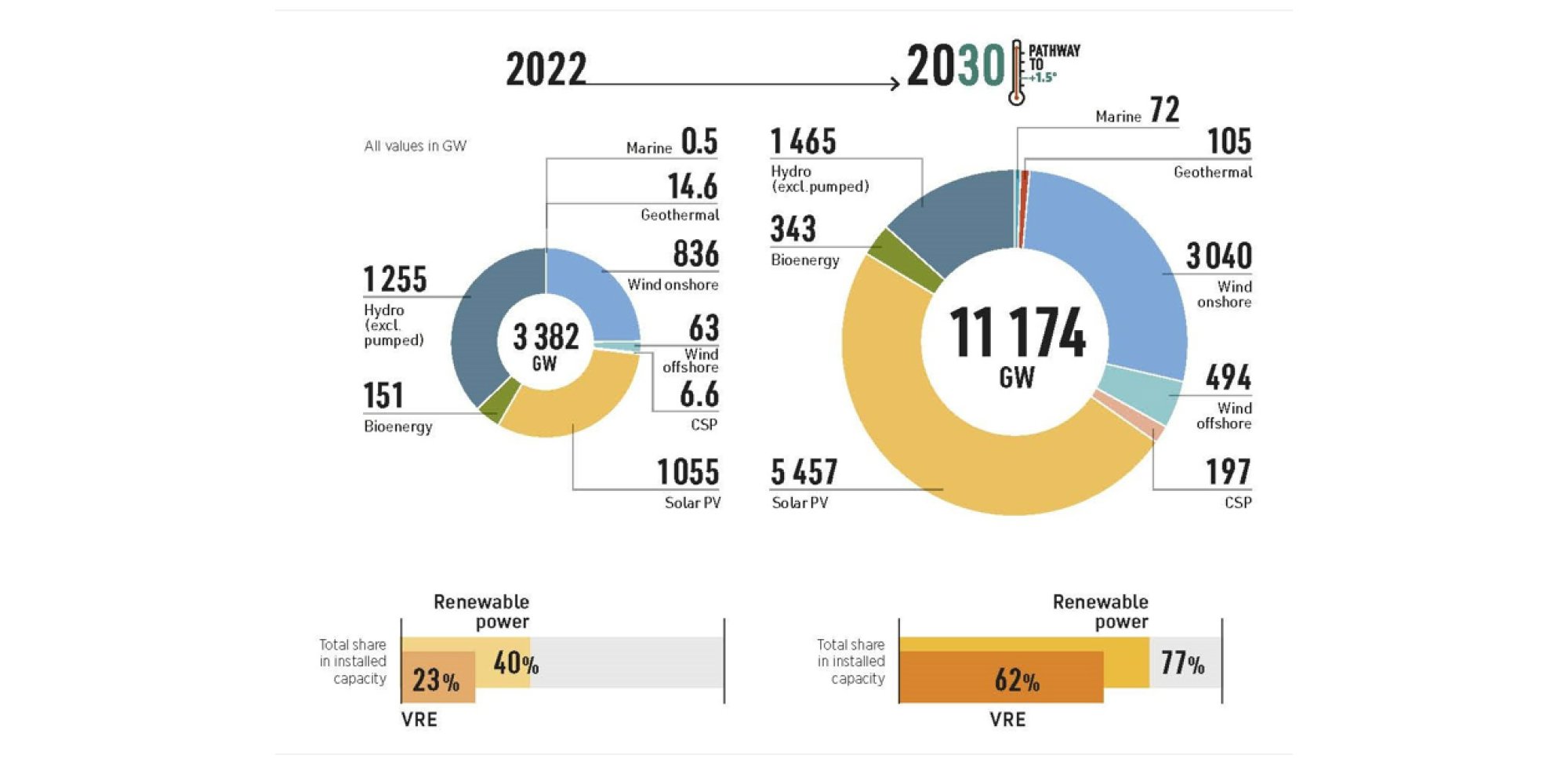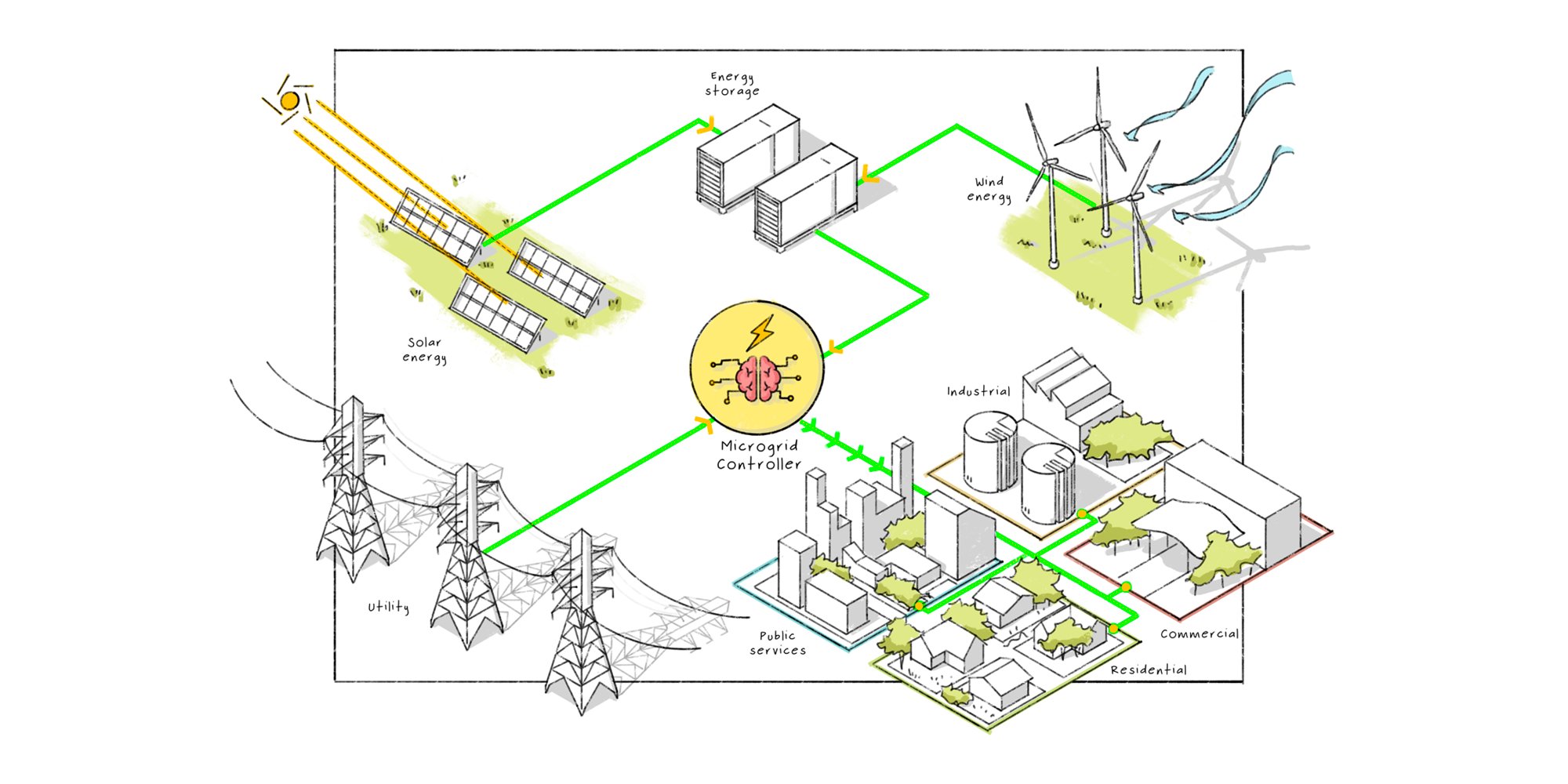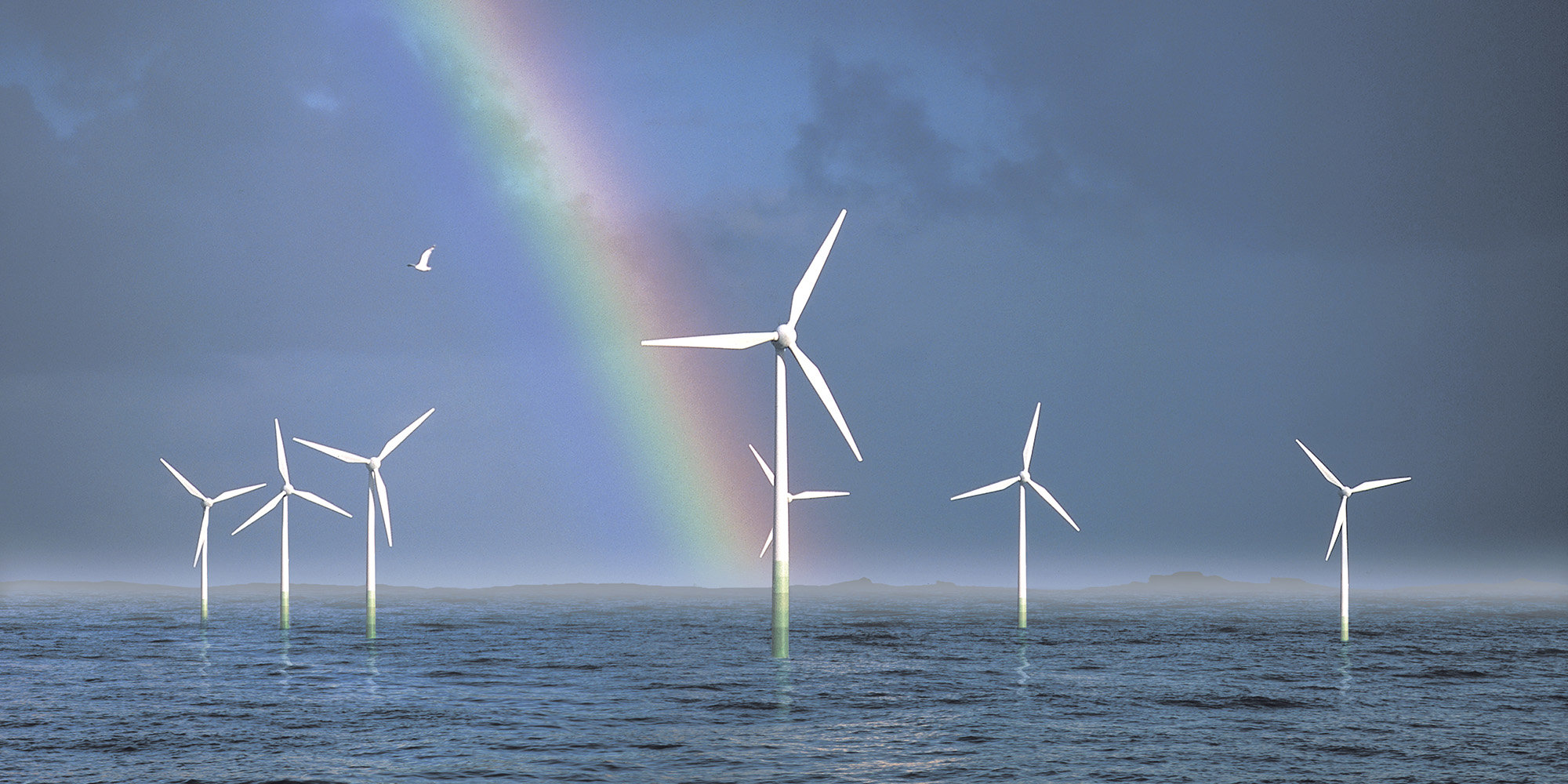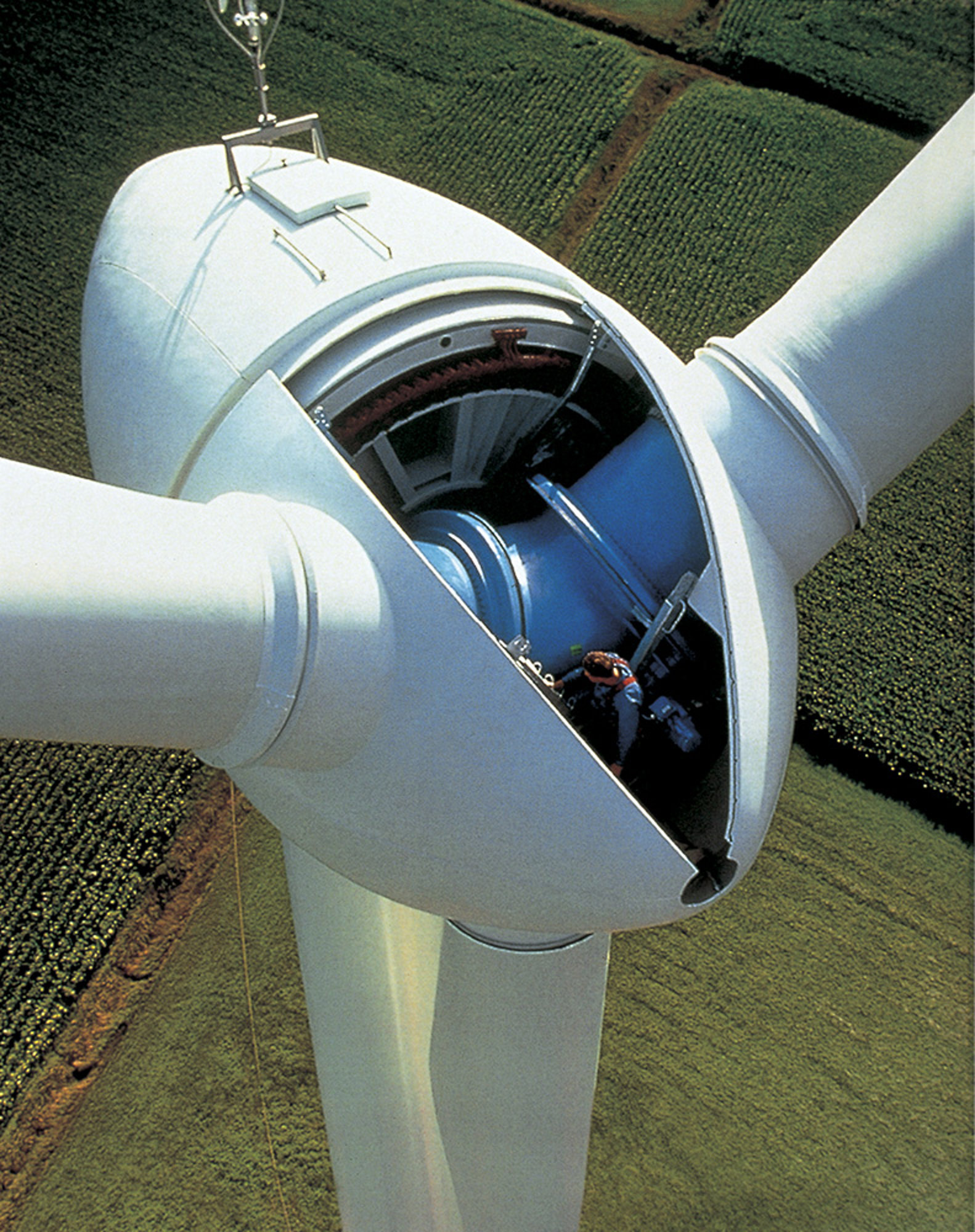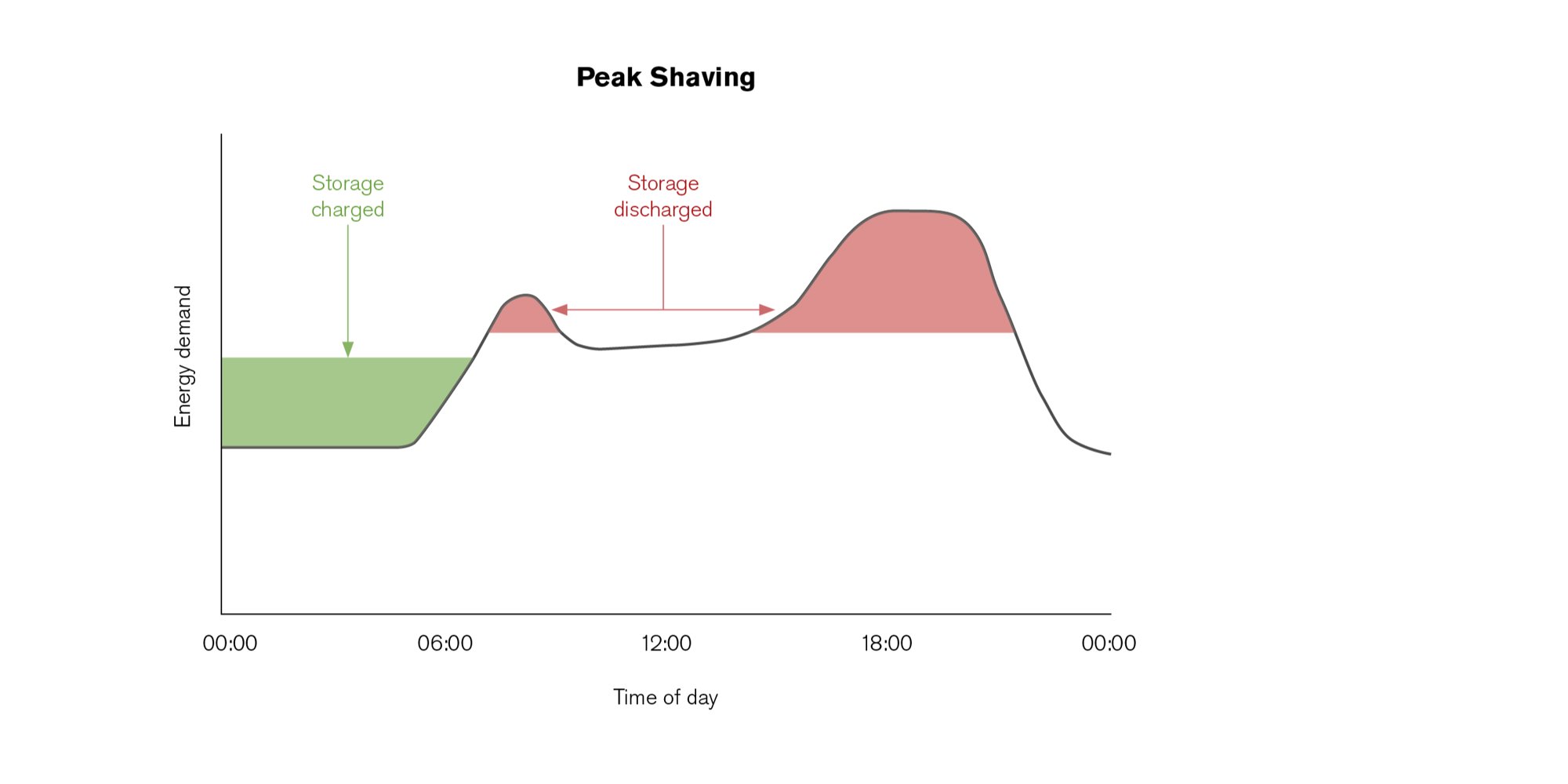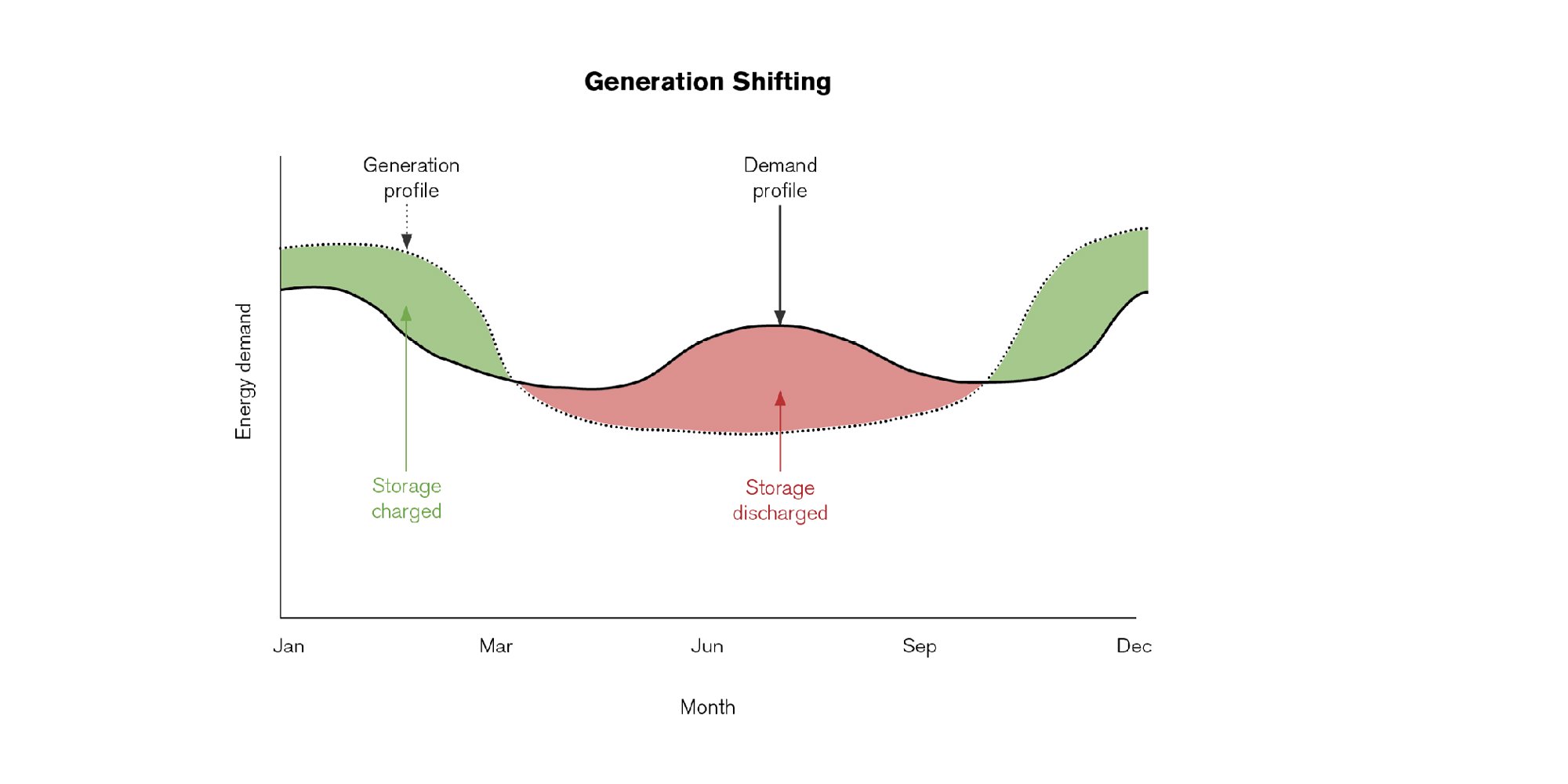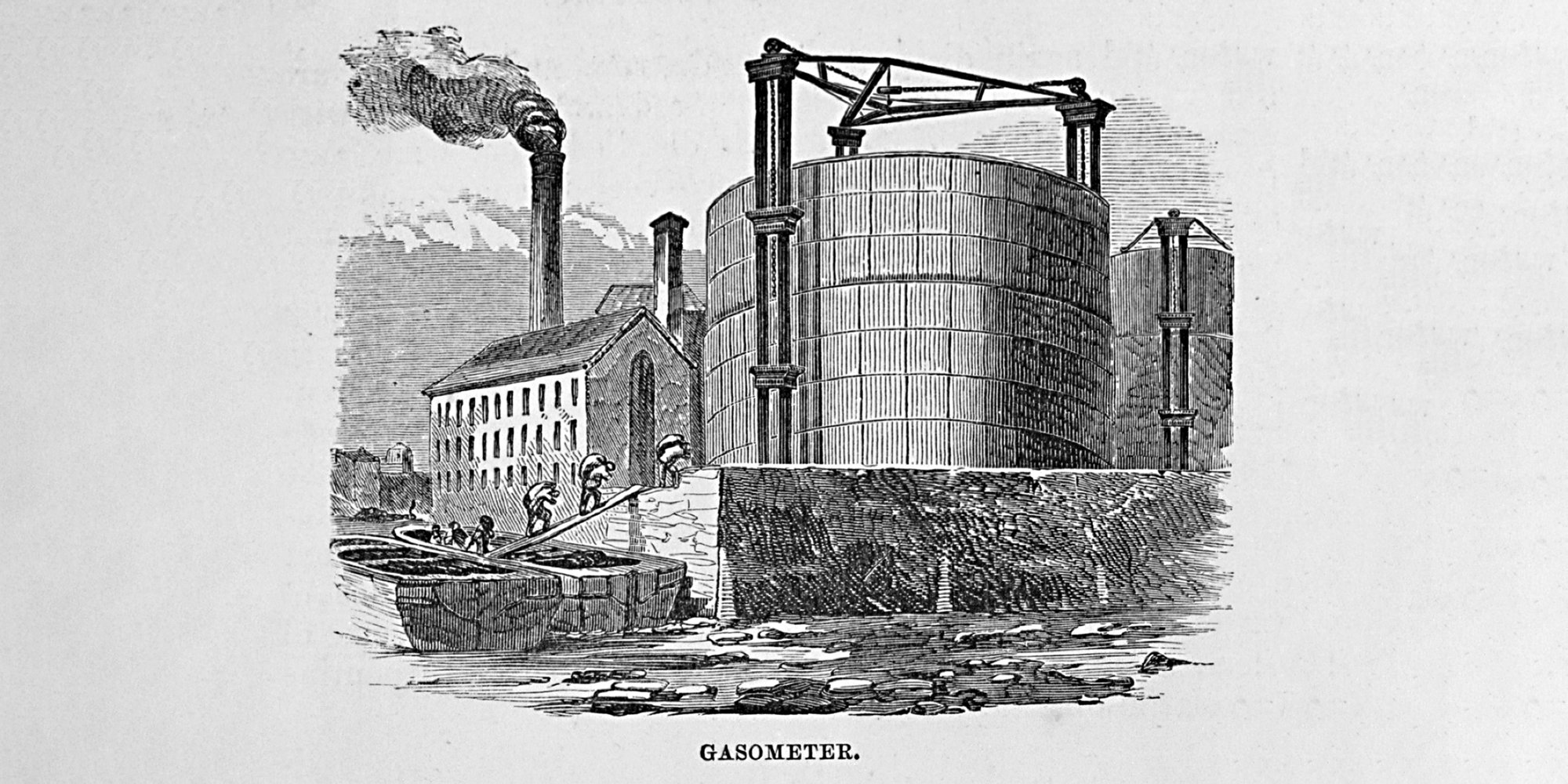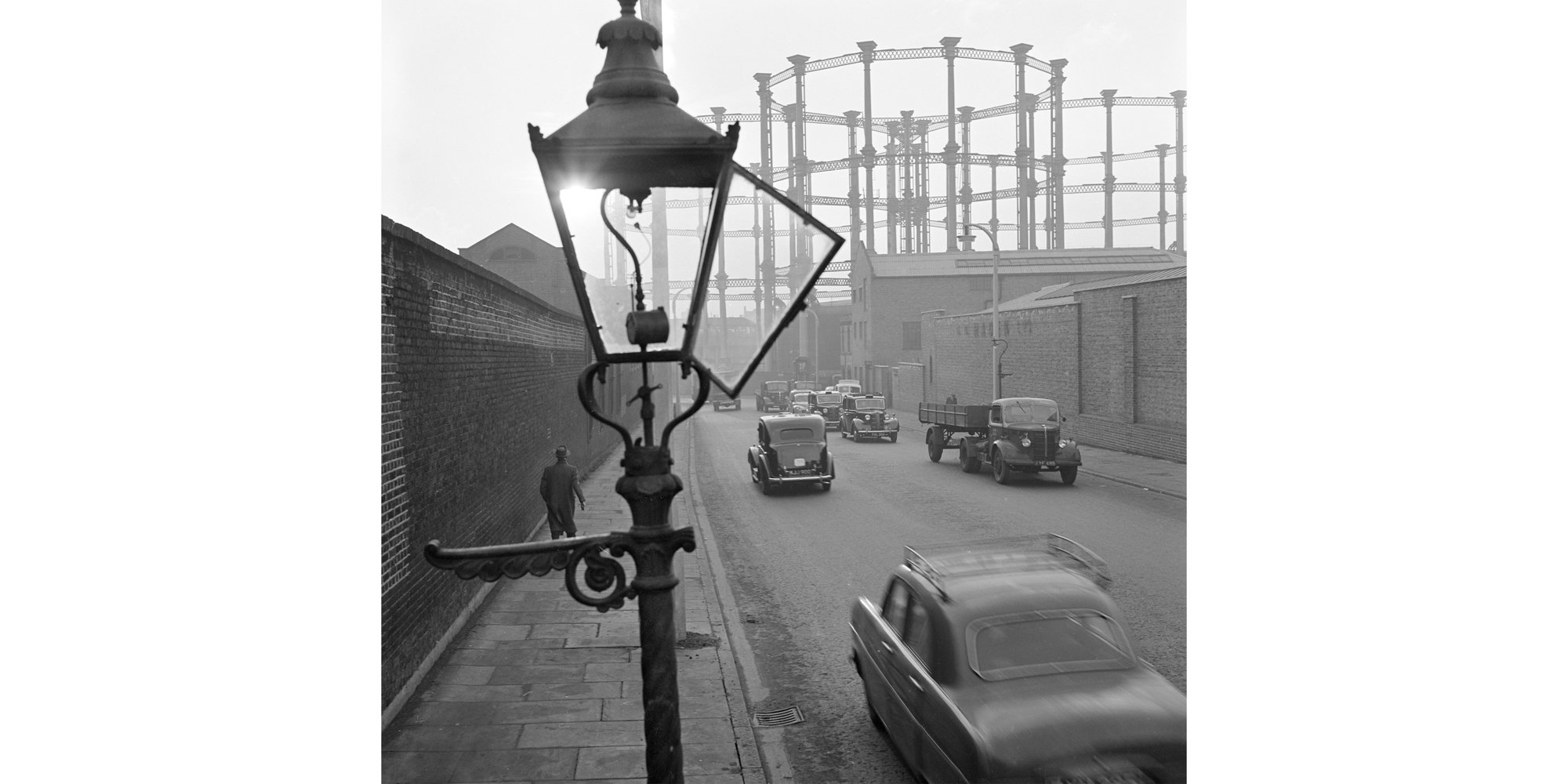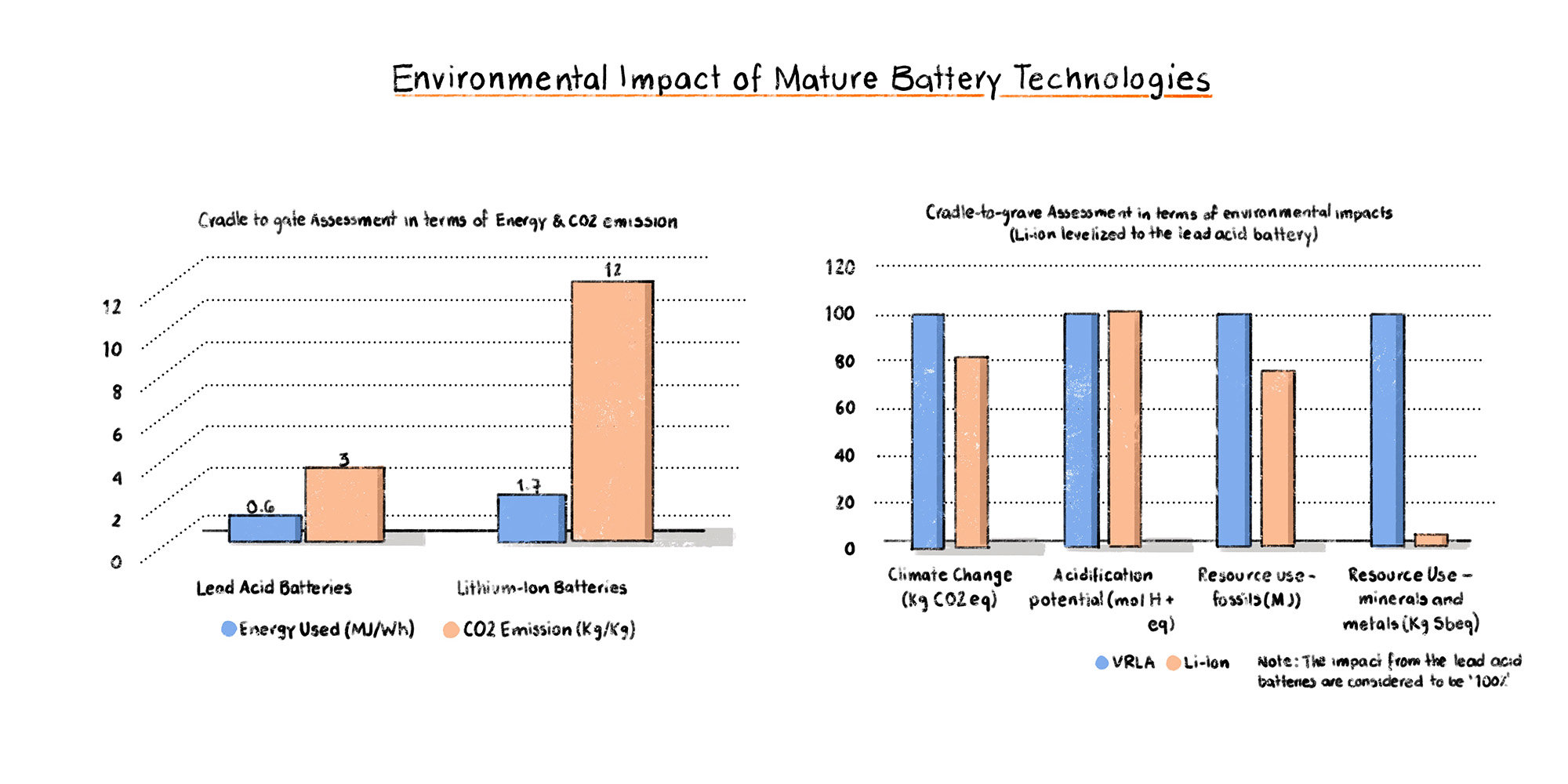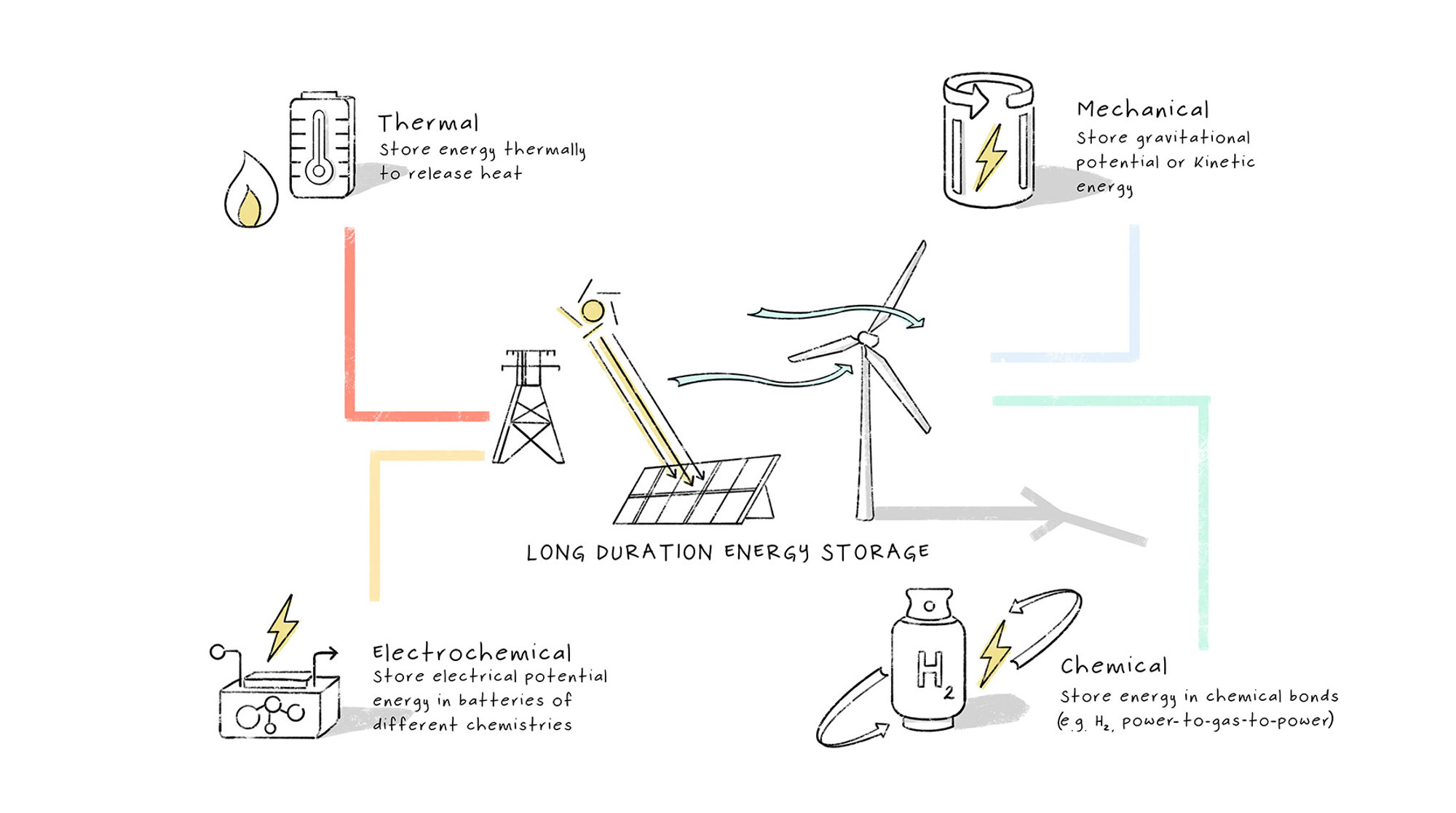As demonstrated by the solar farm at Masdar City (above), sustainable design requires thinking beyond the immediate built envelope to ask how buildings and urban plans are connected and powered. Foster + Partners environmental engineers Andreia Guerra Dibb and Jaymin Patel make a case for integrating renewable energy generation and storage into the architectural plan, to imagine buildings and cities that are ‘lean, clean, and green.’
12th March 2024
Energetic Architecture: Designing for Energy Generation, Storage, and Integration
ARCHITECTS POLLUTE. This was the cover story of the now-famous October 2003 edition of Metropolis, an internationally recognised design and architecture magazine. The cover proved contentious at the time and was met with hostility by the architectural community. Today, however, the connection between the built environment and carbon emissions is more widely accepted than it was two decades ago, and the message more urgent than ever.
The Metropolis cover, which presents rolled-up architectural plans as chimneys of a fossil fuel power plant, has a crucial subheading: ‘Architects are the problem… and our best solution.’ It is this thinking that has directed Foster + Partners from its founding in 1967 – long before Metropolis was established – and has enabled the practice to openly acknowledge the ‘problems’ of the sector, and creatively and innovatively imagine and realise its potential ‘solutions’.
Within architecture, these ‘solutions’ have often focused on energy efficiency, with insulation and ventilation being key concerns. This has widened to incorporate some commercially available methods of energy generation into the design process, such as photovoltaic panels. The past decade has also seen a rise in discourses surrounding the embodied carbon of a design, as well as efforts to calculate and offset the emissions released during construction.
These are all vital aspects to consider in sustainable design. However, none can quite account for a grid-view of the built environment. The grid-view understands architecture and urban planning as implicated in energy systems beyond the immediate built envelope – energy systems that are under increasing pressure as they transition away from fossil fuels and from a centralised, national grid. The question, then, is how to express this in an architectural context? The following article considers three solutions that the Environmental Engineering team at Foster + Partners propose: researching on-site generation potential, understanding the forms of energy storage that can be integrated into designs, and advocating for ‘microgrids’ that are geared towards a net zero future.
Environmental engineering and energy at Foster + Partners
The connection between environmental engineering and energy is not a new practice; it can be observed across Foster + Partners’ projects from its founding decades. In the 1970s, for example, the studio’s planning study for the island of Gomera proposed several pioneering energy strategies. Energy self-sufficient houses were conceived to be supported by natural resources; wind power generates electricity for lighting; sea-water deliveries allow drinking water to be distilled in solar stills; and anaerobic generators digest household waste to create methane gas for cooking. The combination of almost constant sunshine and reliable winds on Gomera made the island a perfect test-bed for an alternative energy-powered grid. Several such systems were proposed – including wind-powered water pumps and electricity generators.
Toward the turn of the millennium, the practice’s Berlin’s Reichstag was designed to be powered by renewable biofuel and was connected with a co-generator. Surplus heat is stored as hot water in an aquifer deep below ground and can be pumped up to heat the building or to drive an absorption cooling plant to produce chilled water. These environmental engineering decisions led to a 94 per cent reduction in carbon dioxide emissions for the building and set a precedent for civic architecture designed for a sustainable future.
Sketch of 30 St Mary Axe by Norman Foster. 'The city within a city has always been full of surprises'. The sketch explores how the building sits within the close urban grain of the City of London © Norman Foster Foundation Archive.
Diagram depicting floorplate temperature in 30 St Mary Axe. Due to solar gain, and despite the use of high-performance glass, the top floors of the building would have been susceptible to overheating. A chilled floor was therefore introduced, together with diffused air brought in from the edge. This computer model shows air temperature on Level 39 within comfortable levels. © Hilson Moran
Similarly, 30 St Mary Axe in London, completed just after the Metropolis cover in 2004, incorporated a system that reduced the building’s reliance on air conditioning, together with other sustainable measures, which meant it used only half the energy consumed by a conventionally air-conditioned office tower; it was deemed the ‘first environmentally sustainable skyscraper in London’ and was awarded the RIBA Stirling Prize that year. In both cases, a wider understanding of energy production and consumption – beyond the immediate architectural envelope – was required and deployed.
COP28 and energy transition
Evidently, Foster + Partners have been thinking about questions of sustainability and energy efficiency for decades. Such discussions are now mainstream and of global concern. In December 2023, the 28th United Nations Climate Change Conference (COP28), held in the United Arab Emirates, gathered representatives from over 200 countries, with a cross-section of scientific, political, commercial, civic, charitable, and academic figures invited to contribute.
At the close of the summit, many countries agreed that cutting fossil fuel consumption is required to prevent a climate change catastrophe. While the concluding document does not explicitly demand the phasing out of coal, oil, and gas, this historic text is the first of its kind, signalling a global consensus to move away from fossil fuels. The agreement aligns with a commitment from numerous leaders to triple the world’s installed renewable energy generation capacity by 2030. This commitment forms one of the International Energy Agency (IEA)’s five pillars for limiting global warming to 1.5°C (2.7°F) above preindustrial levels by the end of the century.
Global installed renewable electricity generation capacity in the 1.5°C Scenario, 2022 and 2030. CSP = concentrated solar power; GW = gigawatt; PV = photovoltaic; VRE = variable renewable energy. Bioenergy includes biogas, biomass waste and biomass solids. Source: COP28, IRENA and GRA (2023), Tripling renewable power and doubling energy efficiency by 2030: Crucial steps towards 1.5°C.
Moving from fossil fuels-based production and consumption to renewable systems requires energy networks to undertake a process known as the energy transition – this affects the generation, consumption, and storage of energy. The increasing presence of renewable energy within an energy supply (at both a local and a national level), the onset of electrification of industries such as transport, and improvements in energy storage are all key drivers of this energy transition.
There is no universal solution to best facilitate this transition, and every country is approaching the challenge differently. The United Kingdom, for example, is aiming to become more reliant on ‘cleaner’ energy – meaning renewable and nuclear systems – by 2050. They are also aiming to transition sectors such as transport into becoming electrical, and there are plans to use hydrogen fuel in aviation. At the same time, the European Union are looking beyond individual member states towards a plan for the import and export of energy between nations, opening the possibility of grids becoming more connected than before. However, despite these projections, progress is slow. This picture grows increasingly complicated since different nations have different infrastructures, energy grids, and different proposed routes to decarbonisation; as the United Nations has warned, ‘[the] commitments made by governments to date fall far short of what is required.’
Architecture’s role in energy transition
How can, and should, architecture respond to this need to transition? Buildings and urban plans require energy; the UN estimates that cities ‘consume about 75 per cent of global primary energy and emit between 50 and 60 per cent of the world’s total greenhouse gases.’ They are therefore implicated in the questions of generation and storage that surround energy supply – though less likely to be foregrounded as sites where ‘solutions’ might be possible. Rather than waiting for legislative directives and infrastructural change (which can be slow, varying in efficacy, and costly), architects must gear their designs towards energy transition, now. We must take responsibility for our designs, and in doing so, exercise a level of understanding and control over how they use and store energy.
Today, the Environmental Engineering team at Foster + Partners hones and applies its thinking to a variety of projects, which greatly vary in scale and energy requirements. Being an international practice, these projects span geographies, climates, and countries, each of which have varying national attitudes towards reaching ‘Net Zero by 2050’ – a target set by the United Nations in the Paris Agreement in 2016. Each project is its own mix of ‘problem’ and ‘solution’. What brings the architects and environmental engineering team together is a sense of shared responsibility: a need to be lean, clean, and green.
The case for the microgrid
Transporting energy across long distances is often inefficient, resulting in curtailments or caps where energy is not transferred at all. In reverse, surges in use (in the mornings and evenings, or winter as opposed to summer) can pressurise entire systems at once. Additionally, transitioning into renewable systems requires that storing and reabsorbing energy be considered at a local level.
To create a reliable grid structure that is prepared for renewable transition, the site of energy generation and storage needs to extend beyond the original, centralised grid structure. This approach creates something that we can call a ‘microgrid’ – a grid that is local and minor in scale, but a major progression in infrastructure design.
In other words, the microgrid is a small network of electricity users attached to a local source of supply. It is usually attached to a centralised national grid but can function independently. The microgrid raises complex, interlinked questions of generation and storage in an architectural or urban context. Within a microgrid, storage can be integrated on the generation side (between the plant and the grid), the demand side (at the building), and the distribution network between, creating and allowing for a versatile, resilient energy system.
Potential for generation
Early in the design process, architects and engineers must work together and ask what opportunities there are to generate energy on or near a project site. By using local climate data – that often spans forty or fifty years – in combination with computer models that can account for climate change, the Environmental Engineering team can predict the site’s conditions and the most suitable forms of generation that might be used there.
Is the site windy or sunny? Is there a potential for tidal or wave turbine energy? In all cases, the seasonality of a site is considered. If a location has good wind potential in January, for example, but excellent solar potential in July, then an approach known as ‘generation shifting’ might be suggested, which offers a mixed-modal approach to generating energy. In cases where energy potential from renewable sources is prohibitively low or excessively intermittent to be relied upon entirely, more stable clean generation technologies such as next-generation geothermal can be called upon to provide support. Even small-scale nuclear generators have been considered, depending on project size and time scale. This is about designing in a way that is both site-specific and adaptable to changes in seasonality.
Energy demand varies across the day and the year. Different strategies address this fluctuating demand: ‘peak shaving’ throughout the day, and ‘generation shifting’ throughout the year. © Foster + Partners
The team also estimate how much power a building or masterplan, will require to operate, and when demand is likely to increase or decrease throughout the year. This demand can then be considered in relation to the type of design being proposed, and then tested for alignment with proposals for the energy that might be generated. Ideally, one wants a system to generate energy as and when it is required. This, however, is difficult in real-time application, especially with weather-dependent sources such as wind and solar. For a stable and predictable grid structure, excess energy needs to be absorbed, so that it can be stored for future use.
Architectures of storage
Storage is an essential part of any energy system, including the microgrid. Though renewables such as wind and solar have become far more efficient and cost-effective technologies over the past decade, they cannot guarantee a constant supply of energy (solar, for example, only works during daylight hours). Designing in ways that reduce pressure on a grid as it attempts to transition to renewable power must, therefore, factor in storage systems that can reabsorb and store energy for hours, days, perhaps even weeks. Like the data centres that house our ephemeral ‘cloud’ data, energy storage is built, requiring both materials and spatial planning. As energy demands increase, energy storage must therefore be increasingly integrated into design.
In discussions surrounding renewables, the storage of this energy is often framed as a problem – a drawback. However, it is worth remembering the need to store and generate energy has driven architectural design throughout history. Within the United Kingdom, a varied architectural history of energy storage can be found. Gasholders such as No. 13 Old Kent Road, the recently renovated Battersea Power Station, and The Roman Baths are all listed by Heritage England as historically significant buildings. All are architectural records of industrial innovation, and which were designed with the generation and physical storage of energy in mind. So often labelled ‘anti-architecture’ or ‘non-architecture’, such buildings that integrate energy generation and storage might better be reimagined as an architectural typology within their own right. Their design requires a complex negotiation of thermal, electrical, plumbing, and ventilation engineering, ambitious construction parameters, and robust plans for broader urban integration. Why criticise renewable energy for requiring storage when non-renewable resources have always done so in the form of their raw materials?
Coal barges being unloaded at a gasworks with a gasholder in the foreground. © Historic England Archive
A gas lamp in the foreground with the guide frames of the Kings Cross gasholders in the background. Between the 1840s and 1890s, most guide frames were composed of cast-iron columns. These were architecturally elaborate gasholders with classical architectural features such as Tuscan capitals. © Historic England Archive
Another branch of gasholder design was the development of guide frames as cylindrical ‘lattice shells’. These had exceptionally thin metal uprights combined with diagonal beams, reducing the use of horizontal girders until they could be emitted altogether. The revolutionary prototype is Gasholder No. 13, Old Kent Road, London, built in 1879, one of the most technologically and structurally innovative gasholders ever made. It inspired the development of helical or geodesic structures, a form later seen in Barnes Wallis airframes for aeroplanes (1930s), Buckminster Fuller’s Domes (1950s), and even Foster + Partner’s 30 St Mary Axe (2004). © Historic England Archive
By embedding storage in strategic locations within a microgrid system, excess energy can more readily be absorbed and used when needed. Rather than viewing energy storage as a separate infrastructural problem, the teams at Foster + Partners consider how their designs can play into and contribute to the necessary shifts needed to reach net zero. This requires that both energy generation and storage be absorbed into the definition and practice of integrated design, and that engineers, architects and designers work in awareness of one another at an early stage in the design process.
Anticipating new technologies
The next question, then, is what type of storage to use. Lithium-ion and lead acid batteries remain popular choices, though their well-recorded environmental impact is impossible to deny – not to mention the contamination of ecosystems caused when their materials are extracted and later discarded. These problems are not only environmental but social, as the mining of battery minerals such as lithium and cobalt (also used in other industries) is closely linked to the exploitation and expropriation of communities in the Global South. Initiatives to recycle these materials are emerging, but at not enough of a scale to solve these problems.
What other technologies are there? Advancements in storage have opened avenues for thinking – and building – differently. Commercially available options include electromechanical storage, such as flow batteries, and mechanical storage such as compressed air. Options that are not yet commercially available, but which must be considered include thermal and chemical sources. Thermal sources, such as a sand battery are still in their pilot stage, but present huge opportunity for projects in the Middle East, where sand is readily and freely available; chemical batteries that use hydrogen present a particularly promising ability to efficiently store energy for longer periods.
Energetic architecture
Understanding energy generation, storage, and integration as an essential aspect of architectural and urban planning will be essential in anticipating and preparing for a sustainable future. This involves working with and thinking beyond the built envelope – towards a grid-view of how buildings are connected and powered, and where this energy is stored. There are indeed many problems still facing the built environment in today’s climate crisis, and as years pass the global task of reversing its effects grow more complex. However, solutions are possible and probable. By applying specialist knowledge early on in projects Foster + Partners has, and continues to have, potential ways that we might build and live in the future.
References:
https://www.cfr.org/article/renewable-energy-and-cop28
https://www.cop28.com/en/global-renewables-and-energy-efficiency-pledge
https://www.irena.org/Events/2023/Dec/IRENA-at-COP28
https://www.spglobal.com/en/research-insights/articles/what-is-energy-transition
https://commonedge.org/the-2003-metropolis-cover-story-that-changed-things-for-sustainability/
Author
Andreia Guerra Dibb and Jaymin Patel
Author Bio
Andreia Guerra Dibb is a Chartered Electrical Engineer with the Environmental Engineering team at Foster + Partners. She has over 22 years of experience developing projects which range from site-wide medium-voltage and low-voltage networks to commercial and residential properties.
Jaymin Patel is a Power Infrastructure Specialist at Foster + Partners. After graduating from the University of Southampton in 2015, he spent several years working on infrastructure strategies and design for masterplans and major development projects. Jaymin then joined Foster + Partners in 2022 and works on the integration of sustainable infrastructure principles on masterplans across the globe.
Editors
Tom Wright and Clare St George
